Northrop F-15 Reporter

A&A Models, 1/72 scale
Reviewed by John Miller

Background Summary
The Northrop F-15 Reporter (later RF-61) was an American unarmed photographic reconnaissance aircraft. Based on the Northrop Black Widow night fighter, it was the last piston-powered photo-reconnaissance aircraft designed and produced for the U.S. Air Force. Though produced in limited quantities, and with a relatively short service life, the F-15's aerial photographs of the Korean Peninsula would prove vital in 1950, when North Korea invaded the south.
Development Summary
The F-15 Reporter was created when the guns were removed from the experimental XP-61E, the last fighter variant of the P-61 Black Widow. With less than six months flying time, the first XP-61E was taken back to the Northrop modification shop where it was converted into an unarmed photographic reconnaissance aircraft. All the guns were removed, and a new nose was fitted, capable of holding an assortment of aerial cameras. The aircraft, re-designated XF-15, flew for the first time on 3 July 1945, with Northrop test pilot L. A. "Slim" Parrett at the controls. For unknown reasons Northrop subcontracted the nose for the F-15A to the Hughes Tool Company of Culver City, California. The F-15A used the existing P-61C wings (without fighter brakes), engines and tail sections but with an entirely new, more streamlined fuselage housing a crew of two under a continuous bubble-canopy.
The pilot was seated in the front, with the reconnaissance operator in the back. The back-seat occupant controlled the cameras and navigated the aircraft. However, the rear seat of the F-15A was fitted with a set of rudimentary flying controls, which made it possible for the reconnaissance operator to relieve the pilot if needed. Both crew members were rated pilots and both were trained in the reconnaissance task, so they usually alternated position on each flight.
Mapping of Korea
During their operational lifetime F-15As, mostly operating from bases in Japan, were responsible for most of the aerial maps of North Korea used at the start of the Korean War. These photographs were to prove extremely valuable, as it was not until the arrival of Marine photo-reconnaissance F7F-3P in late 1950 that additional photographs of the peninsula could be made, and then only under constant threat from attacking North Korean MiGs.
Text edited from Wikipedia:
https://en.wikipedia.org/wiki/Northrop_F-15_Reporter
Note There is a P-61 currently under restoration by the father and son team of Gene and Russ Strine of the Mid-Atlantic Air Museum in Pennsylvania. To see pictures of the restoration and to donate to the cause, go Here.
https://maam.org/the-widows-web/
On 10 light grey sprues come ~128 styrene parts. There are 9 in clear, 28 in photo etch, masks, and a single decal sheet with markings for 3 airframes. The overall impression is that of a limited production kit.
There’s a fair amount of flash on most parts and some of the sprue gates are thick. The surface details are rough. Many details, rendered in relief, such as wing fillets and access panels will have to be refreshened with a blade, files, and a scriber. The inscribed panels lines are uneven. Some will have to be filled and re-scribed to be more scale appropriate.
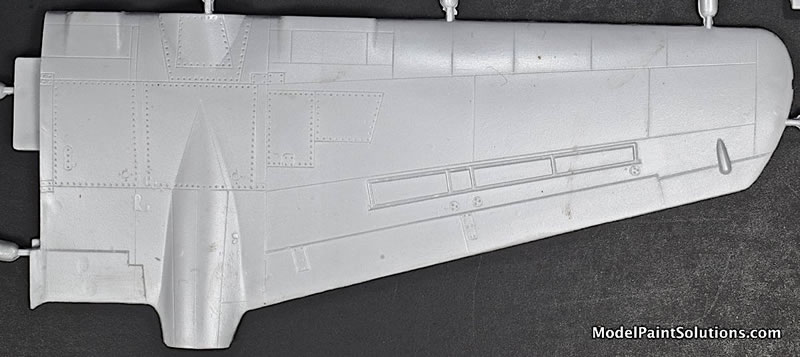
Conversely, some panel lines will have to de refreshed or deepened in order to match the depths of surrounding lines. In addition, there are rough areas on some of the larger parts that will require sanding and blending. I suspect an appreciable amount of time will be spent preparing the surface of the kit for primer and paint. As such, this will not be a “shake ’n bake” experience for most.
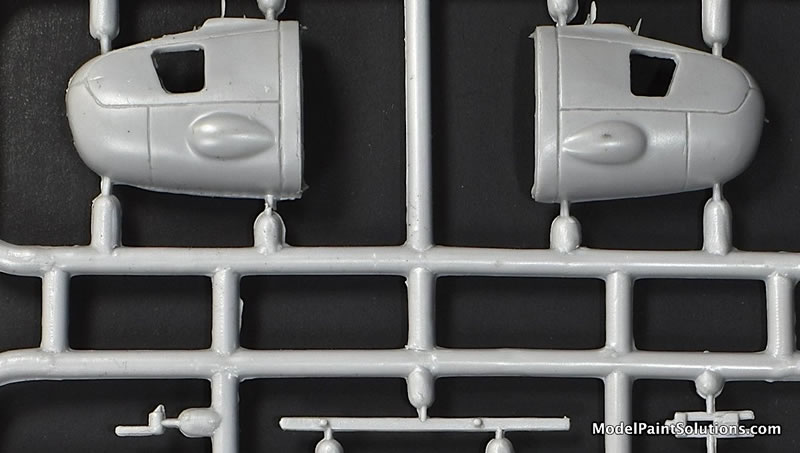
Lastly, there is a marked similarity between most of the larger parts and the corresponding parts in the DML P-61. I suspect some of the parts are interchangeable between the two kits. This might come in handy (“nudge nudge, wink wink—say no more”).
As with most kits with conventional engineering, the build starts with the cockpit. Here both seats and instrument panels are augmented with PE parts.
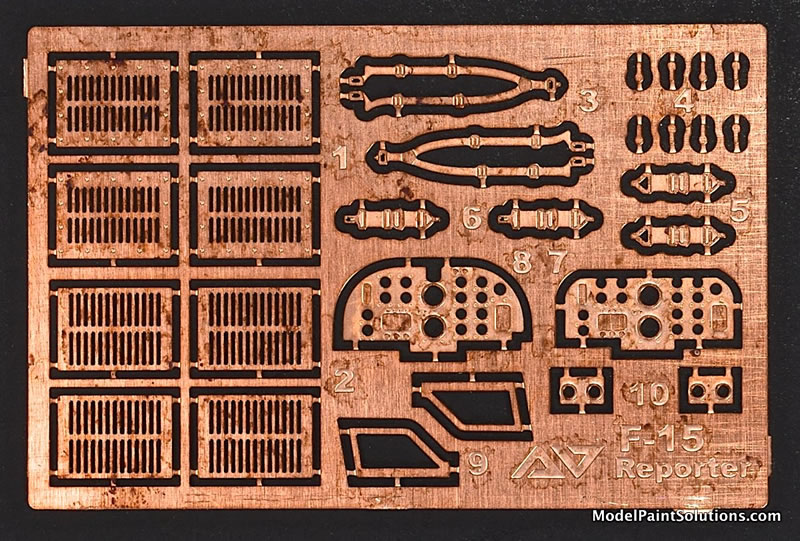
Once the assembled cockpit is sandwiched between the fuselage halves, the build turns to the wings, which contain multiple structural parts and inserts for the leading edge intakes.
With the wings affixed to the fuselage, the landing gear and the left and right booms are next in sequence. There is a good bit of detail provided in the main wheel wells. The nose and main gear will look convincing after some clean up, paint, and a wash.
Next up are the engine cowls (from halves) as well the propellers and 2-piece engines. The propellers will need some clean up, thinning, and re-contouring prior to use. In addition, the inscribed rivets around the cowl would benefit from a little blending and buffing.
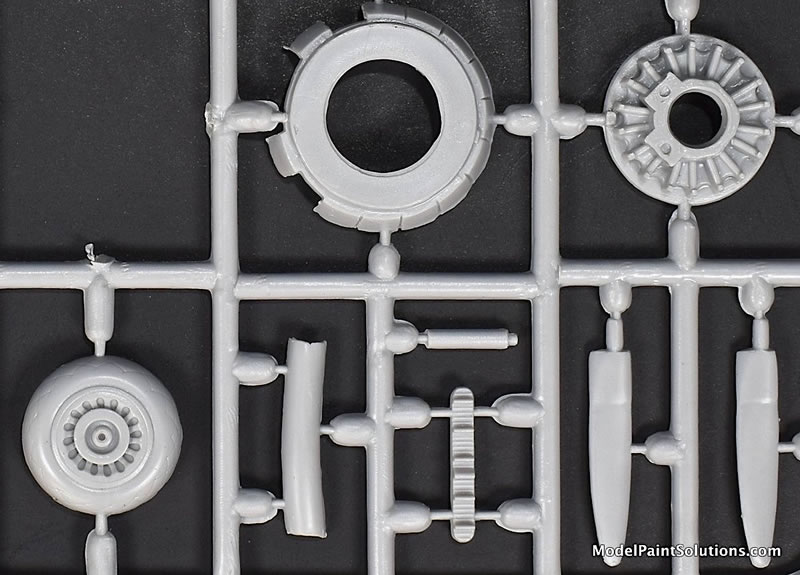
The engines are simplified but useable. I would think about replacing them with readily available aftermarket versions. The assembled booms are then joined to the wings with the 2-piece horizontal stabilizer/elevator assembly trapped in between the horizontal stabilizers. And with that, the airframe is largely complete.
Clear Parts
The 9 clear parts are sufficiently clear but a bit on the thick side. I would not think about posing the canopy open unless I found an aftermarket replacement or made a thinner copy myself (usually by plunge-forming).

That said, I suspect the parts will be quite useable after a good buffing and a dip in your favorite clear coat.
Color and Markings
The decals are printed by Cartograf.
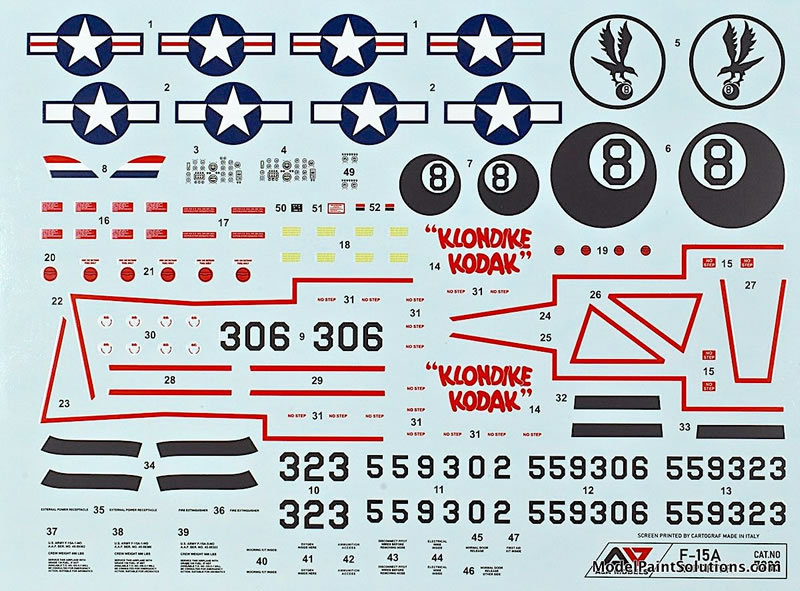
They are crisply printed with good registration and color density. Basic airframe stencils and markings for 3 airframes are provided as follows:
-
F-15A-1 No 302 (45-59302) “Klondike Kodak” 8th Photo Reconnaissance Squadron, Johnson Air Base, Japan, 1947.
-
F-15A-1 No 306 (45-59306) 8th Photo Reconnaissance Squadron, Johnson Air Base, Japan, 1947.
-
F-15A-5 No 323 (45-59323) 8th Photo Reconnaissance Squadron, Johnson Air Base, Japan, 1947.
Well, there you have it. I’ve got to hand it to the folks and A&A Models for taking on such an esoteric subject and one that’s long needed better attention in the one-true-scale. For those with experience, patience, and the determination to build a very nice 1/72 Northrop F-15 Reporter, this is the kit for you. It’s all here and in the correct shape—right out of the box. That said, the level of detail is a bit soft in some areas (engines and cockpits), but overall is sufficient for the scale. For those that are more motivated, I suspect there are many aftermarket parts, made for the DML P-61, that could be used in this build (in addition to the DML P-61 itself…)
Recommended! (with the aforementioned caveats ;)
Keep your airbrush wet!
John
For more on this review visit ModelPaintSolutions.com.
Review Text and Images Copyright © 2024 by John Miller
Page Created 11 July, 2024
Last updated
11 July, 2024
Back to HyperScale Main Page
Back to Reviews Page

|
Home
| What's New |
Features |
Gallery |
Reviews |
Reference |
Forum |
Search